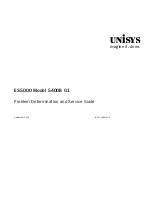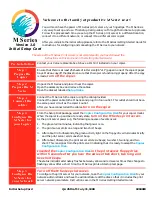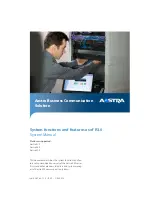
vii
System Board . . . . . . . . . . . . . . . . . . . . . . . . . . . . . . . . . . . . . . . . . . . . . . . . 4-27
Battery on Control Panel. . . . . . . . . . . . . . . . . . . . . . . . . . . . . . . . . . . . . . . . 4-28
Appendix A
System Setup Program . . . . . . . . . . . . . . . . . . . . . . . . . . A-1
System Setup Screens . . . . . . . . . . . . . . . . . . . . . . . . . . . . . . . . . . . . . . . . . . .A-1
Screen Conventions . . . . . . . . . . . . . . . . . . . . . . . . . . . . . . . . . . . . . . . . .A-1
Key Functions . . . . . . . . . . . . . . . . . . . . . . . . . . . . . . . . . . . . . . . . . . . . . .A-2
Screen Color Combinations . . . . . . . . . . . . . . . . . . . . . . . . . . . . . . . . . . .A-3
Main Menu . . . . . . . . . . . . . . . . . . . . . . . . . . . . . . . . . . . . . . . . . . . . . . . .A-3
Boot Options Submenu . . . . . . . . . . . . . . . . . . . . . . . . . . . . . . . . . . . .A-5
Advanced Menu . . . . . . . . . . . . . . . . . . . . . . . . . . . . . . . . . . . . . . . . . . . .A-6
Peripheral Configuration Submenu . . . . . . . . . . . . . . . . . . . . . . . . . .A-7
Advanced Chipset Configuration Submenu . . . . . . . . . . . . . . . . . . . .A-9
Plug and Play Configuration Submenu. . . . . . . . . . . . . . . . . . . . . . .A-11
Security Menu. . . . . . . . . . . . . . . . . . . . . . . . . . . . . . . . . . . . . . . . . . . . .A-12
Exit Menu . . . . . . . . . . . . . . . . . . . . . . . . . . . . . . . . . . . . . . . . . . . . . . . .A-14
Index
Figures
Figure 1-1.
Computer Orientation . . . . . . . . . . . . . . . . . . . . . . . . . . . . . . . 1-2
Figure 1-2.
Front Panel Features. . . . . . . . . . . . . . . . . . . . . . . . . . . . . . . . . 1-3
Figure 1-3.
Front/Left Internal View . . . . . . . . . . . . . . . . . . . . . . . . . . . . . 1-4
Figure 1-4.
Back/Right Internal View . . . . . . . . . . . . . . . . . . . . . . . . . . . . 1-5
Figure 1-5.
Back Panel Features . . . . . . . . . . . . . . . . . . . . . . . . . . . . . . . . . 1-6
Figure 1-6.
Memory Module and SIMM Sockets. . . . . . . . . . . . . . . . . . . . 1-7
Figure 1-7.
Power Supply Connectors . . . . . . . . . . . . . . . . . . . . . . . . . . . 1-11
Figure 1-8.
DC Power Connector PWR1 . . . . . . . . . . . . . . . . . . . . . . . . . 1-12
Figure 1-9.
DC Power Connector PWR2 and PWR3 . . . . . . . . . . . . . . . . 1-12
Figure 1-10. DC Power Connector PWRSCSI (DDBP). . . . . . . . . . . . . . . 1-13
Figure 1-11. DC Power Connector PWRFD (FD1–FD4). . . . . . . . . . . . . . 1-13
Figure 1-12. Power-Supply Paralleling Board Connectors . . . . . . . . . . . . 1-14
Figure 1-13. Power Distribution . . . . . . . . . . . . . . . . . . . . . . . . . . . . . . . . . 1-15
Figure 1-14. System Board Components . . . . . . . . . . . . . . . . . . . . . . . . . . 1-16
Figure 1-15. System Board Jumpers and Switches. . . . . . . . . . . . . . . . . . . 1-17
Figure 1-16. Microprocessor Module Jumpers. . . . . . . . . . . . . . . . . . . . . . 1-20
Figure 1-17. SCSI Backplane Board. . . . . . . . . . . . . . . . . . . . . . . . . . . . . . 1-21






































